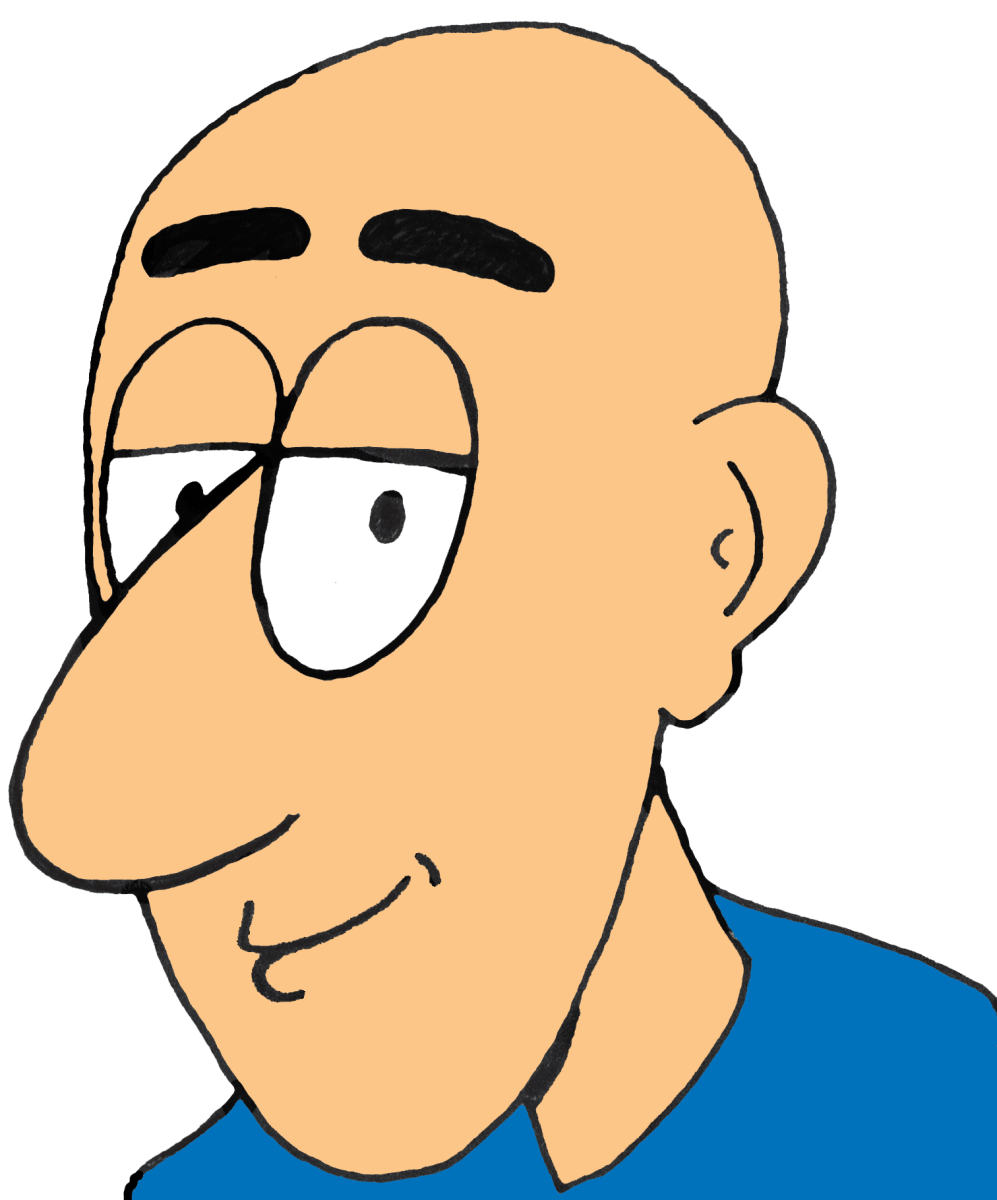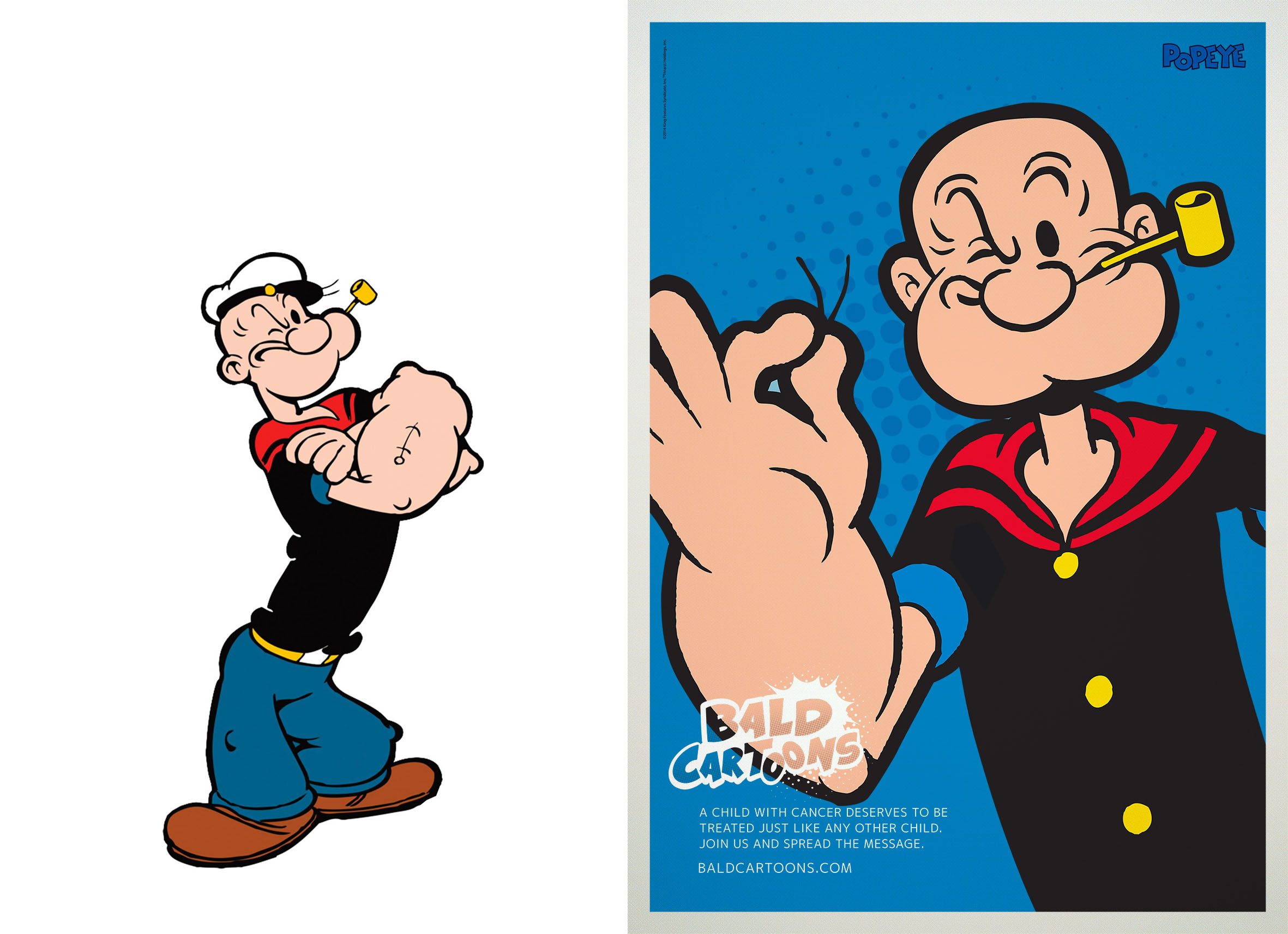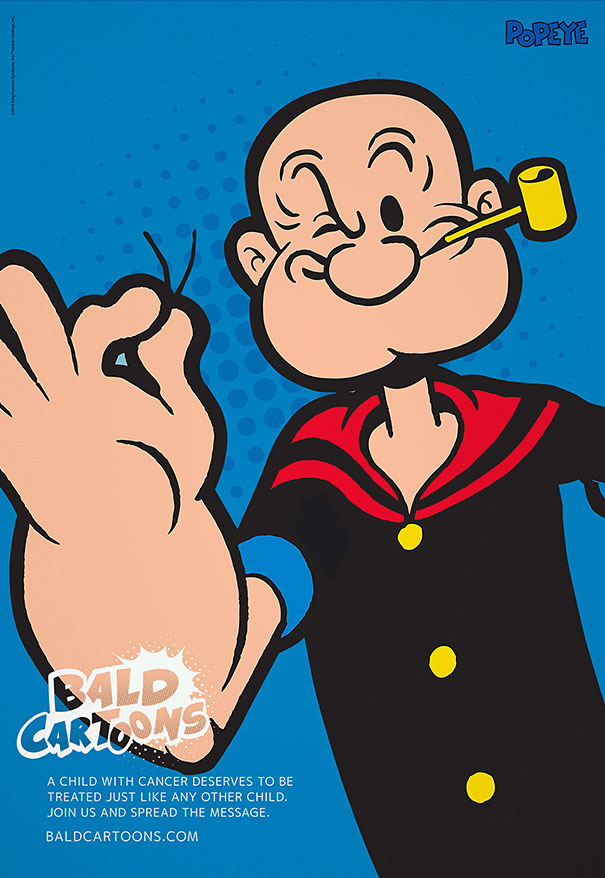Ultimate Guide To Bald Headed Cartoons: Hair-Raising Characters
Bald headed cartoons, a humorous caricature often employed in animation and comic strips, depict characters with a complete or partial absence of hair on their heads. These characters are frequently portrayed for comedic effect, with their baldness serving as a distinctive visual cue.
Bald headed cartoons have a long and storied history, dating back to the early days of animation. One of the most iconic bald headed cartoon characters is Mr. Magoo, a nearsighted and accident-prone elderly man who first appeared in a 1949 short film. Other notable bald headed cartoon characters include Charlie Brown from the Peanuts comic strip, Professor Farnsworth from the Futurama television series, and Homer Simpson from The Simpsons.
Bald headed cartoons can be used for a variety of comedic purposes. They can be used to create slapstick humor, as in the case of Mr. Magoo, or to satirize social or political issues, as in the case of Charlie Brown. Bald headed cartoons can also be used to create more subtle forms of humor, such as the deadpan delivery of Homer Simpson.
Bald Headed Cartoons
Bald headed cartoons are a staple of animation and comic strips, providing a rich source of humor and satire. Here are seven key aspects of bald headed cartoons:
- Comedic: Bald headed cartoons are often used for comedic effect, with their baldness serving as a distinctive visual cue.
- Satirical: Bald headed cartoons can also be used to satirize social or political issues.
- Iconic: Some bald headed cartoon characters, such as Mr. Magoo and Charlie Brown, have become iconic figures in popular culture.
- Diverse: Bald headed cartoons come in a variety of shapes and sizes, from the bumbling Mr. Magoo to the wise-cracking Homer Simpson.
- Enduring: Bald headed cartoons have been a popular form of entertainment for decades, and they continue to be enjoyed by audiences of all ages.
- Versatile: Bald headed cartoons can be used for a variety of purposes, from slapstick comedy to social commentary.
- Memorable: Bald headed cartoon characters are often more memorable than their hairy counterparts, thanks to their distinctive appearance.
These seven key aspects highlight the importance and versatility of bald headed cartoons. They are a unique and enduring form of entertainment that can be enjoyed by people of all ages.
Comedic
Bald headed cartoons are often used for comedic effect because their baldness is a distinctive visual cue that can be used to create humor. For example, a bald headed cartoon character may be portrayed as being clumsy or forgetful, and their baldness may be used to emphasize their comedic mishaps. Additionally, bald headed cartoon characters may be given exaggerated facial expressions or body language to create a humorous effect.
The use of bald headed cartoons for comedic effect is a common trope in animation and comic strips. Some of the most iconic bald headed cartoon characters, such as Mr. Magoo and Charlie Brown, are known for their comedic misadventures. These characters have become so popular because their baldness is a key part of their comedic appeal.
The use of bald headed cartoons for comedic effect can be seen as a reflection of the way that baldness is often perceived in society. Baldness is often seen as a sign of aging or weakness, and it can be a source of insecurity for some people. However, bald headed cartoons can help to challenge these negative perceptions by presenting baldness in a humorous and positive light.
Satirical
Bald headed cartoons can be used to satirize social or political issues because baldness is often seen as a sign of aging or weakness. By portraying bald characters in a humorous or satirical way, cartoonists can challenge these negative perceptions and make a point about the absurdity of discrimination based on appearance.
For example, the cartoonist Garry Trudeau has used his character Doonesbury to satirize the Vietnam War, the Watergate scandal, and other political issues. Doonesbury is a bald character, and his baldness is often used to emphasize his vulnerability and powerlessness in the face of the political machine.
Another example is the cartoonist Matt Groening, who has used his character Homer Simpson to satirize American culture and politics. Homer is a bald character, and his baldness is often used to emphasize his ignorance and laziness.
Bald headed cartoons can be a powerful tool for satire because they can use humor to make a point about serious issues. By challenging negative perceptions of baldness, bald headed cartoons can help to promote tolerance and understanding.
Iconic
Bald headed cartoon characters have become iconic figures in popular culture because they are often relatable and memorable. Mr. Magoo, for example, is a nearsighted and accident-prone elderly man, and Charlie Brown is a shy and insecure child. These characters are both bald, and their baldness is a key part of their visual identity.
The baldness of these characters helps to make them more memorable and recognizable. Mr. Magoo's bald head is often the butt of jokes, and Charlie Brown's bald head is a symbol of his insecurity. These characters would not be as iconic if they had hair.
The iconic status of bald headed cartoon characters is a testament to the power of visual storytelling. These characters have become so popular because they are visually distinctive and relatable. They are a reminder that baldness is not a flaw, but a unique and memorable characteristic.
Diverse
Bald headed cartoons are a diverse group, ranging from the bumbling Mr. Magoo to the wise-cracking Homer Simpson. This diversity is one of the things that makes bald headed cartoons so appealing to audiences of all ages.
- Physical Appearance
Bald headed cartoons come in all shapes and sizes. Some are tall and thin, while others are short and stout. Some have large heads, while others have small heads. This physical diversity helps to create a wide range of comedic possibilities. - Personality
Bald headed cartoons also have a wide range of personalities. Some are kind and gentle, while others are mean and grumpy. Some are intelligent, while others are not so bright. This diversity of personality helps to create a wide range of comedic situations. - Occupation
Bald headed cartoons can be found in all walks of life. Some are doctors, lawyers, and teachers. Others are construction workers, farmers, and garbage collectors. This diversity of occupation helps to create a wide range of comedic storylines. - Relationships
Bald headed cartoons can have a variety of relationships with other characters. Some are married, while others are single. Some have children, while others do not. This diversity of relationships helps to create a wide range of comedic possibilities.
The diversity of bald headed cartoons is one of the things that makes them so popular. This diversity allows creators to create a wide range of comedic stories and characters that can appeal to audiences of all ages.
Enduring
The enduring popularity of bald headed cartoons can be attributed to a number of factors, including their comedic appeal, their ability to satirize social and political issues, and their iconic status. Bald headed cartoons have been a staple of animation and comic strips for decades, and they continue to be enjoyed by audiences of all ages.
- Comedic Appeal
Bald headed cartoons are often used for comedic effect, with their baldness serving as a distinctive visual cue. This comedic appeal is one of the reasons why bald headed cartoons have been so popular for so long. - Satirical Value
Bald headed cartoons can also be used to satirize social and political issues. This satirical value is another reason why bald headed cartoons have been so popular for so long. - Iconic Status
Some bald headed cartoon characters, such as Mr. Magoo and Charlie Brown, have become iconic figures in popular culture. This iconic status is another reason why bald headed cartoons have been so popular for so long. - Relatability
Bald headed cartoons are often relatable to audiences of all ages. This relatability is another reason why bald headed cartoons have been so popular for so long.
The enduring popularity of bald headed cartoons is a testament to their comedic appeal, their satirical value, their iconic status, and their relatability. These cartoons have been a part of our culture for decades, and they continue to be enjoyed by audiences of all ages.
Versatile
The versatility of bald headed cartoons is one of their key strengths. They can be used for a wide range of purposes, from slapstick comedy to social commentary. This versatility is due in part to the fact that baldness is a distinctive visual cue that can be used to create humor or to make a point.
For example, the cartoon character Mr. Magoo is a bumbling and accident-prone elderly man. His baldness is often used to create slapstick humor, as in the scene where he walks into a lamppost. However, Mr. Magoo's baldness can also be used to make a point about the challenges of aging. In one episode, Mr. Magoo is mistaken for a child and is sent to a daycare center. This episode uses humor to highlight the fact that older people are often treated like children, even when they are perfectly capable of taking care of themselves.
Another example of the versatility of bald headed cartoons is the character Charlie Brown. Charlie Brown is a shy and insecure child. His baldness is often used to symbolize his vulnerability. However, Charlie Brown's baldness can also be used to make a point about the importance of self-acceptance. In one episode, Charlie Brown is teased about his baldness. However, he eventually learns to accept himself for who he is, and he even comes to appreciate his baldness.
The versatility of bald headed cartoons is a major reason why they have been so popular for so long. They can be used to create a wide range of comedic and satirical stories that can appeal to audiences of all ages.Memorable
The distinctive appearance of bald headed cartoon characters is a major factor in their memorability. A bald head is a unique and eye-catching visual cue that helps to set a character apart from the crowd. This is especially true in animation, where characters with distinctive physical features are more likely to be remembered by audiences.
For example, the cartoon character Mr. Magoo is instantly recognizable thanks to his bald head. Mr. Magoo's baldness is a key part of his visual identity, and it helps to make him one of the most memorable cartoon characters of all time.
Another example is the cartoon character Charlie Brown. Charlie Brown is a shy and insecure child, and his baldness is a symbol of his vulnerability. However, Charlie Brown's baldness is also what makes him so memorable. Charlie Brown is one of the most iconic cartoon characters of all time, and his bald head is a big part of his appeal.
The memorability of bald headed cartoon characters is a testament to the power of visual storytelling. A well-designed bald headed character can be instantly recognizable and memorable, even if they have a simple design or personality.The practical significance of this understanding is that it can help creators to create more memorable and iconic cartoon characters. By giving their characters distinctive physical features, such as a bald head, creators can help to ensure that their characters will be remembered by audiences for years to come.
FAQs on "Bald Headed Cartoons"
This section addresses frequently asked questions (FAQs) regarding "bald headed cartoons." These questions and answers aim to clarify common misconceptions and provide a better understanding of the topic.
Question 1: What are bald headed cartoons?
Bald headed cartoons are a type of cartoon that features characters with bald heads. These characters can be used for a variety of purposes, such as comedy, satire, and social commentary.
Question 2: Why are bald headed cartoons often used for comedy?
Bald headed cartoons are often used for comedy because baldness is a distinctive visual cue that can be used to create humor. For example, a bald headed cartoon character may be portrayed as being clumsy or forgetful, and their baldness may be used to emphasize their comedic mishaps.
Question 3: Can bald headed cartoons be used for more than just comedy?
Yes, bald headed cartoons can be used for a variety of purposes, including satire and social commentary. For example, the cartoonist Garry Trudeau has used his character Doonesbury to satirize the Vietnam War, the Watergate scandal, and other political issues.
Question 4: Are there any famous bald headed cartoon characters?
Yes, there are many famous bald headed cartoon characters, such as Mr. Magoo, Charlie Brown, and Homer Simpson. These characters have become iconic figures in popular culture, and their baldness is a key part of their visual identity.
Question 5: Why are bald headed cartoon characters often so memorable?
Bald headed cartoon characters are often more memorable than their hairy counterparts because their baldness is a unique and eye-catching visual cue. This helps to set them apart from other characters and makes them more likely to be remembered by audiences.
Question 6: What is the significance of bald headed cartoons?
Bald headed cartoons have a long and storied history, and they continue to be popular today. They can be used for a variety of purposes, from entertainment to social commentary. Bald headed cartoons are a unique and important part of popular culture, and they continue to play a significant role in our society.
Summary: Bald headed cartoons are a diverse and versatile group of characters that can be used for a variety of purposes. They are often used for comedy, but they can also be used for satire and social commentary. Bald headed cartoon characters are often more memorable than their hairy counterparts, and they continue to play a significant role in popular culture.
Transition: The following section will explore the history of bald headed cartoons and their impact on popular culture.
Tips for Creating Memorable Bald Headed Cartoon Characters
Bald headed cartoon characters can be a great way to add humor and personality to your animations and comics. Here are a few tips for creating memorable bald headed cartoon characters:
Tip 1: Exaggerate their features. Bald headed cartoon characters often have exaggerated features, such as large heads, big eyes, and wide mouths. This can help to make them more visually appealing and memorable.
Tip 2: Give them a unique personality. Bald headed cartoon characters should have a unique personality that sets them apart from other characters. This can be done through their dialogue, actions, and interactions with other characters.
Tip 3: Make them relatable. Bald headed cartoon characters should be relatable to audiences. This can be done by giving them flaws and insecurities that audiences can identify with.
Tip 4: Use their baldness to your advantage. Baldness can be a great way to create humor and visual gags. For example, a bald headed cartoon character could slip on a banana peel and land on their head, or they could be mistaken for a cue ball.
Tip 5: Don't be afraid to experiment. There are no rules when it comes to creating bald headed cartoon characters. Experiment with different designs, personalities, and backstories until you find a character that you're happy with.
Summary: By following these tips, you can create memorable bald headed cartoon characters that will entertain and engage audiences of all ages.
Conclusion: Bald headed cartoon characters are a powerful tool for storytelling. They can be used to create humor, satire, and social commentary. By following the tips in this article, you can create memorable bald headed cartoon characters that will stand the test of time.
Conclusion
Bald headed cartoons have a long and storied history, and they continue to be popular today. They can be used for a variety of purposes, from entertainment to social commentary. Bald headed cartoon characters are often more memorable than their hairy counterparts, and they continue to play a significant role in popular culture.
As we have explored in this article, bald headed cartoons are a diverse and versatile group of characters. They can be used to create humor, satire, and social commentary. By following the tips in this article, you can create memorable bald headed cartoon characters that will stand the test of time.
Discover The Rainbow Kiss: A Delightful Blend Of Colors
Celebrate Jeff Cavaliere's Birthday: Fitness Prodigy Turns Another Year Wiser
REMEMBERING THE LOST: Departed "Glee" Cast Members

hair on almost bald man clipart 20 free Cliparts Download images on

Famous Cartoon Characters Shave Their Heads So Kids With Cancer Don’t

Cartoon Characters Shave Their Heads In Solidarity With Kids Who Have
ncG1vNJzZmijn6LCb67LqJlnm5%2Bnsm%2FDyKebqK%2BjY7umwI6yrKGtX5eurbCMoZyanJWZeqSt0a2mqKajY7W1ucs%3D